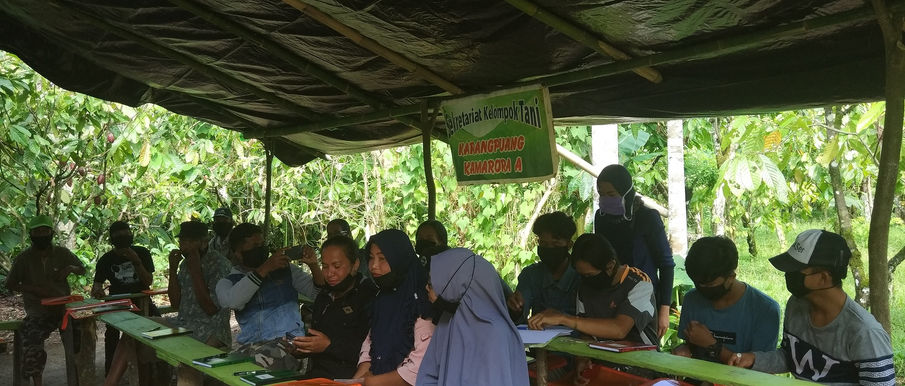
PROJECT 04
Cocoa and Coffee for Sustainability and Value Added In Agricultural Supply Chains in Indonesia, Lore Lindu Biosphere Reserve.
A biosphere reserve is a conservation area for terrestrial, marine and coastal ecosystems whose management aims: (i) conserving biodiversity, restoring ecosystems, increasing ecosystem services and accelerating sustainable economic development, (ii) facilitating education and scientific development in the use of biological resources and ecosystems, and (iii) support climate change mitigation and adaptation. The Lore Lindu Landscape has been designated as a biosphere reserve, with the title Lore Lindu Biosphere Reserve by UNESCO at the suggestion of the Government of Indonesia in 1977. The Lore Lindu Biosphere Reserve covers 4 districts (Sigi, Poso, Donggala and Parigi Moutong) and Palu City.
Cocoa and coffee are one superior plantation commodities in Central Sulawesi Province another one it’s coconut trees. For support the sustainable development of cocoa and coffee plants it is necessary get attention to quality, quantity and continuity. The correct and appropriate implementation of cocoa and coffee cultivation is very important to be applied in field level. Thus, it is hoped that high plant productivity, good quality seeds, sustainable environment, and safe, safety and welfare of farmers can be sustainable.
When the government first applied the new normal period, it marked a new period of activities by implementing the covid-19 protocol. The lore lindu biosphere reserve management and coordination forum through GIZ Central Sulawesi is targeting some number of villages in the Lore Lindu biosphere reserve to develop cocoa and coffee commodities under the SASCI+ program. This activity was very well received in 2 villages for cocoa development of environmentally friendly cocoa was held in Kamarora A and Kamarora B villages Palolo sub-district, Sigi district and 2 villages for the development of environmentally friendly coffee was held in UPT Lembang Tongoa Village, Palolo sub-district, Sigi disrtict and Nupabomba Village, Tanantovea sub-district, Donggala district
This activity was begun from socialization, initial studies on the socio-economic conditions of community, the physical condition of cocoa and coffee fields, mapping of prospective farmers and prospective spots location, and some series field schools starting with: strengthening group management, GAP training, Practices on making organic fertilizers and natural plants pesticides, making simple drying houses, making cocoa fermentation boxes, training on traditional bean (cocoa and coffee) proccessing, training on Good Environmental practises (GEP) and supporting empowerment of farmers through 75.000 Arabica coffee bean seeds for Mandiri Jaya Nupabomba group, 15.000 Robusta coffee bean seeds for Tokelomo Mandiri Lembang Tongoa, and 30.000 cocoa bean seeds ICCRI 008 and ICCRI 006 for villages farmer groups (Kamarora A and Kamarora B)
Agricultural friendly farmer groups have been formed as assisted groups, totaled 4 groups (2 cocoa farmer groups and 2 coffee farmer groups). Until now, each farmer group is directed to manage seedlings into environmentally friendly cocoa and coffee commodity spots through the SASCI + program and in conjunction with the FORCLIME project to compare agroforestry systems to improve balance between farmer groups. agriculture and forestry sector.
Strengthening assisted villages for environmentally friendly cocoa and coffee development, through coordination and communication for several related parties among plantation assistants in each sub-district (PPL), village goverment, sub-district government, Food Planting Service, Horticulture and Plantation service of Sigi and Donggala districts, Central Sulawesi Provincial Plantation and Animal Livestock Services, Central Sulawesi Agricultural Technology Research (BPTP), BPDAS-HL Palu Poso, Provincial Forestry Service Central Sulawasi, Central Sulawesi Province Transmigration Settlement Unit Service, Central Sulawesi Province Plant and Horticulture Service
Activities increased of coffee and cocoa plantation areas can be seen in the documentation below:






























